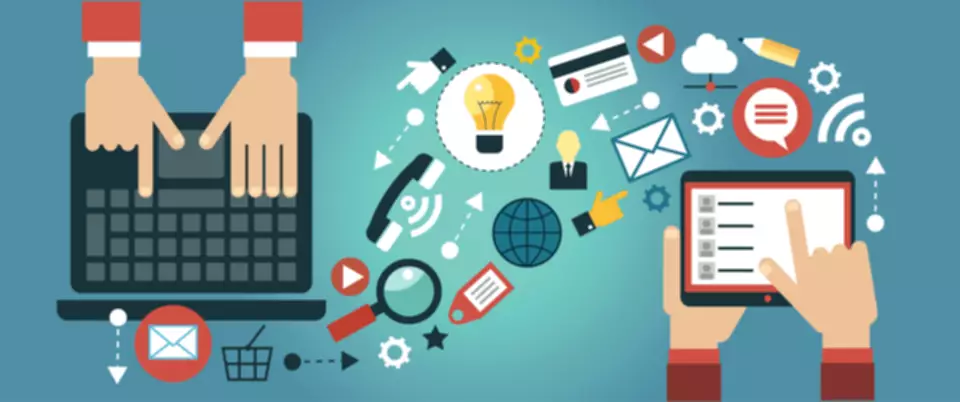Content

Your personal information should already be attached to the financial account, so there will be no need to include those details. Find a variety of financing options including SBA loans, commercial financing and a business line of credit to invest in the future of your business. And when using Routable for payables, you’ll have the option of integrating the platform with your existing accounting software. You’ll enjoy a streamlined approval process and fast reconciliation among other benefits.

Once you receive authorization, you’ll be able to proceed with the rest of the transaction. Chances are that you’ve sent or received an ACH payment before and didn’t even realize it. Payment solutions that help you run your business and protect your customers. Process payments manually, on your website, or through a mobile app. The information in this article is intended for general information purposes only.
By business type
It’s rare to find a business bank account or corporate credit card that does not offer free bill payment services. However, when it comes to paper checks, there’s no comparison to ACH processing times. Although it can take several days for an ACH payment to be processed, once the transaction reaches your bank the money is yours to access. ACH payments allow customers to make electronic payments even if they don’t have a credit card.

This is not mandatory, but it’s a good safety precaution to prevent charging the wrong account accidentally. While some larger organizations can get approved by Nacha to process ACH payments internally, this is mostly outside of scope for smaller businesses. In ACH debit transactions, your ACH processor will ensure that the pre-defined funds automatically land in your account on the pre-defined date (in the absence of any disputes). You can set recurring as well as one-off payments and manage all of them in one place. Failed credit card payments are still one of the leading reasons for involuntary churn, where a customer’s subscription can’t be renewed due to an expired or blocked card. ACH stands for Automated Clearing House, which is a network of financial institutions (banks and credit unions) that facilitates interbank payments in the US.
Get your account details
At the same time, upon connection of a bank account, online cart checkouts make ACH as easy to use as a credit card. Paired with tools to overcome some of ACH’s weaknesses, the payment method becomes a viable option for businesses https://www.bookstime.com/articles/how-your-business-can-accept-ach-transfers tired of paying high processing costs. Accepting payments shouldn’t cause businesses to get hit with exorbitant charges. Yet credit card processing fees remain expensive, costing around 1.3% to 3.5% of every transaction.
Do all bank accounts accept ACH payments?
All banks in the United States can use ACH, as all that's needed to receive an ACH transfer is a valid bank account and routing number. Additionally, payment processors like Square, PayPal, and Stripe also use ACH.
With so many credit card options and payment apps right on our phones, it’s becoming increasingly rare to see people write personal checks. However, it seems that the business world has been slower to adopt 21st-century banking technology, which is why many businesses still rely on sending and collecting checks. To help grow your business and avoid payment hassles, we recommend learning more about how to accept ACH payments. When you accept payments through our payment gateway, you’ll have quick access to cash. You’ll also get a debit card that you can use to make purchases or withdraw funds from one of 55,000 ATMs nationwide.
Why can’t my business accept ACH payments?
This means verifying the customer’s identity, engaging in ongoing monitoring, and ensuring funds are neither laundered nor used to finance terrorism. Businesses should check their ACH payment processors’ publicly available information to see how they meet these requirements. According to a 2022 study, checks and ACH debits were the payment types most susceptible to fraud.

Having these documents ready can prevent any roadblocks, allowing you to get your account set up and ready to receive payment. With many people using eChecks, it might be time for small businesses to look to ACH payments as a payment solution. It might be time for small business owners to look to ACH payments as one potential payment solution for their business. This type of payment is most common in the US, where the ACH network is based. It’s overseen by Nacha (the National Automated Clearing House Association). However, many other countries also have systems in place for international ACH transactions.
Pros and Cons of Accepting ACH Payments
Our banking platform allows you to invoice clients and get paid faster than ever before, changing the way you do business. NSF and chargeback fees can quickly ding your bottom line, so you’ll need to look at your ACH account statement regularly to make sure they’re not occurring too often. To prevent fraudulent transactions and errors, NACHA requires us to take “commercially reasonable” steps to check that routing numbers are accurate.
- Our platform makes financial management accessible and affordable.
- Fortunately, modern bank-account verification methods have done away with the need for micro-deposits or voided checks, which could take up to five days to process.
- If you’re running a large or small business, you may want to accept ACH payments from customers.
- If the account has check-writing privileges, you should be able to locate the account and routing numbers at the bottom of a check.
- As previously mentioned, bank accounts don’t expire or get canceled nearly as often as credit cards making them more reliable on file for a recurring customer.
- This article explains what ACH payments are, how they work, and how to set them up for your business.
The Automated Clearing House network serves as an intermediary between financial institutions—allowing banks, businesses, and institutions to send money electronically. The ACH network organizes and processes a type of electronic funds transfer known as an ACH transfer. ACH payment fees can be calculated in a number of ways—either as a flat fee per transaction, as a percentage of a transaction, or as a monthly cost. If you choose to accept ACH payments directly, your bank will determine the fees owed. Transfers such as bill payments, payroll direct deposits, and direct payments are often free of charge. ACH payments are usually a better choice for businesses than paper checks and wire transfers, especially when processing a high volume of ACH B2B payments.
Ready to get started? Get in touch or create an account.
And that’s without taking into account the payment processor’s cut. As a small business owner, understanding Automated Clearing House (ACH) transactions https://www.bookstime.com/ is essential, as more and more banking tasks are performed electronically. There are many instances when a small business can use ACH transactions.
The ACH network is tightly regulated, connecting US financial institutions with many layers of security. There are clearly defined reasons for disputing ACH charges compared to credit card charges, which can be disputed for any reason. The full process typically takes between three to five business days, including transaction verification and funds clearance. ACH Direct Debit is available for U.S. transactions for an additional processing fee that varies according to your pricing agreement. Anyone can accept an ACH payment if they have a bank account in the Automated Clearing House network. The banks in the ACH network are primarily based in the United States.
A Beginner’s Guide to Accepting ACH Payments
Small business ACH payments can be facilitated by a merchant bank used by the vendor, or by a third-party payment processor. Bank-managed ACH payments are fine for backend transactions like a business-to-business ACH debit (like paying a supplier for inventory). However, for consumer-facing transactions, a third-party payment processor will likely offer features that provide a better customer experience.
Without them, businesses risk sending goods without payment, while customers risk incurring unintended overdraft fees. If you’re running a large or small business, you may want to accept ACH payments from customers. They will provide all the necessary tools that business owners need to accept electronic fund transfers.
So it’s not enough to add a payment option on your eCommerce checkout page or to add ACH payment information at the bottom of your invoices. Do those things, but be prepared to follow up to gain the results you want. Every good salesperson knows it’s not enough to ask just one time. When you want your customers to change behavior, you’ll need to ask many times, and in different ways, before you hear the Yes you’re hoping for. NorthOne is proudly made for small businesses, startups, and freelancers.